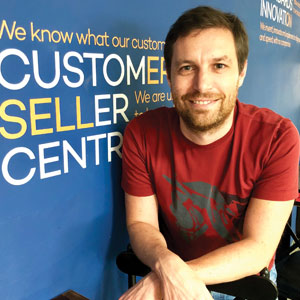THANK YOU FOR SUBSCRIBING

Jimmy Auw, Head of Service Operations, Lenovo
Every year, we can see the demand for better customer experience is increasing. But at the same time, we understand that hiring the best talent, developing, and retaining them have been a serious challenge in this industry. Cost will always increase to keep/get good talent, but at the other side, we also know that services are always being pushed for cost reduction. Some companies might invest a bit more on services, but most of the rest still consider services as the cost center, which “should be optimized.”
Time for 4.0? Quoting from Wikipedia, Industry 4.0 is about “automation and data exchange in manufacturing technologies and processes, which include cyber-physical systems (CPS), the internet of things (IoT), industrial internet of things (IIOT), cloud computing, cognitive computing and artificial intelligence.” If our Industry is moving to 4.0, can our Field Services stay at 2.0 or 3.0? The answer is a big NO. Like it or not, the field services world is quite challenging industry and perhaps not in everyone’s top of mind when it comes to industry they are going to work with. But field services is actually everywhere. In this digital world, there is very high expectation on the durability of the product, but we know there is no such perfect product. So when it comes to problem, customer is expecting high First Time Repair (FTR) and Service Level Agreement (SLA). This is where field services will play a very important role. Yes, important, but why field services are always being forced to reduce cost repeatedly? Simply because the basic logic of (more) profit=(higher) revenue + (lower) cost. High Computing Power + Super Fast Internet=Unlimited Possibilities Change is inevitable. In fact the only thing that is constant is change itself. And in order to change, we need a change of mindset also. In last few years, we have seen higher processing power and lower RAM/storage cost. Who can imagine if the latest Smart Watch can have more processing power than the previous generation video game consoles? Internet is also transforming to become faster and cheaper. If somehow we are happy with 4G, then be prepared that 5G is coming very soon. Combination of both above will create a lot of new possibilities which can change the way we run our field services. Few things in mind: artificial intelligence (AI), augmented reality/ virtual reality (AR/VR), and Internet of Things (IoT). Again if we are not changing, then we can’t survive. Simply that past strategy most likely won’t work against future problem. So, welcome Field Services 4.0! AI is now coming in multiple forms. It can be the main interface to our customer (self-service chat-bot to increase case avoidance). It also can accompany our agent in real-time to analyze customer’s response and provide on-the-fly suggestions (still human agents can decide how to response customer). Finally, AI also can be used to crunch big data and find any outlier based on pre-programmed criteria and also machine learning. With good initial criteria set, it’s unlikely for her to miss any potential outlier. This AI can serve 24/7, never feels tired, never asks for salary increase, is always stable in emotion even working for long hours (non-stop) and even getting smarter as she is learning by doing. Some are connected with the social media like WhatsApp or Line, then Voila! She is basically available everywhere!Services Will Be Required To Be Able To Provide ‘On-Demand’ Basis And Must Be Agile Enough To Scale Up/Down Based On ‘Market Demand’ Without Needing Of Huge Ramp Up/Down Cost
Weekly Brief
I agree We use cookies on this website to enhance your user experience. By clicking any link on this page you are giving your consent for us to set cookies. More info
Read Also
Navigating Compliance Challenges in ESG AML and Digital Onboarding
A Vision for the Future: Automation, Robotics, and the Smart Factory
The Rise of Hyper Automation
Transforming Business Operations with Robotic Process Automation
Combining Automation with AI to Achieve Human-Like Interaction
Implementing RPA - 5 Ultimate Prerequisite
Incorporating the power of recognition into our vendors' sustainability journey
Elevating Guest Experience with Data






















